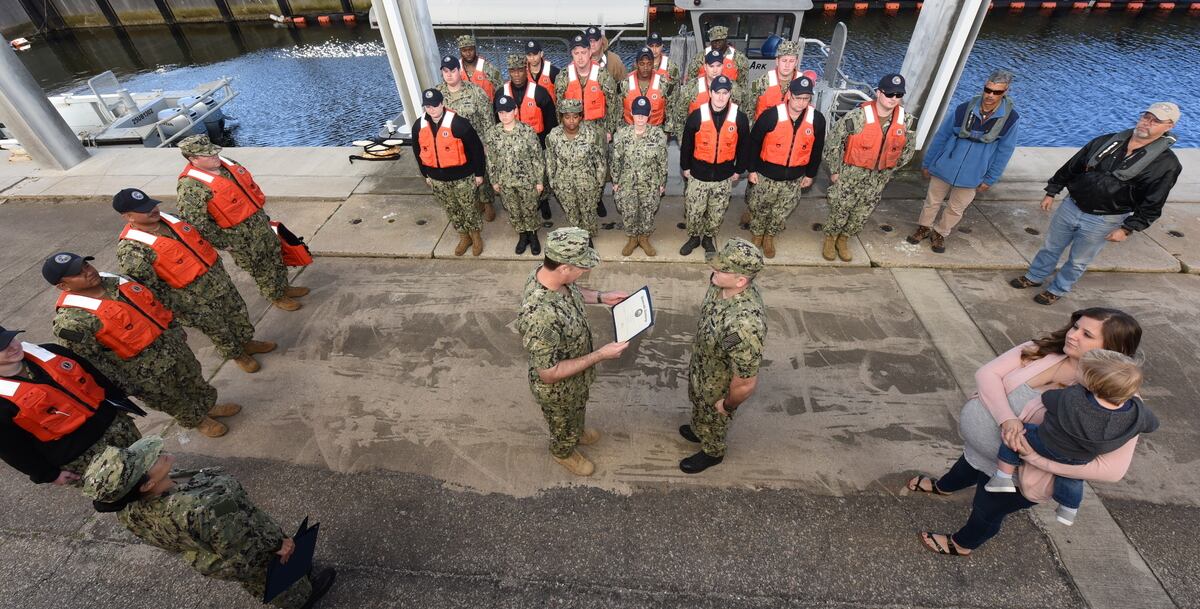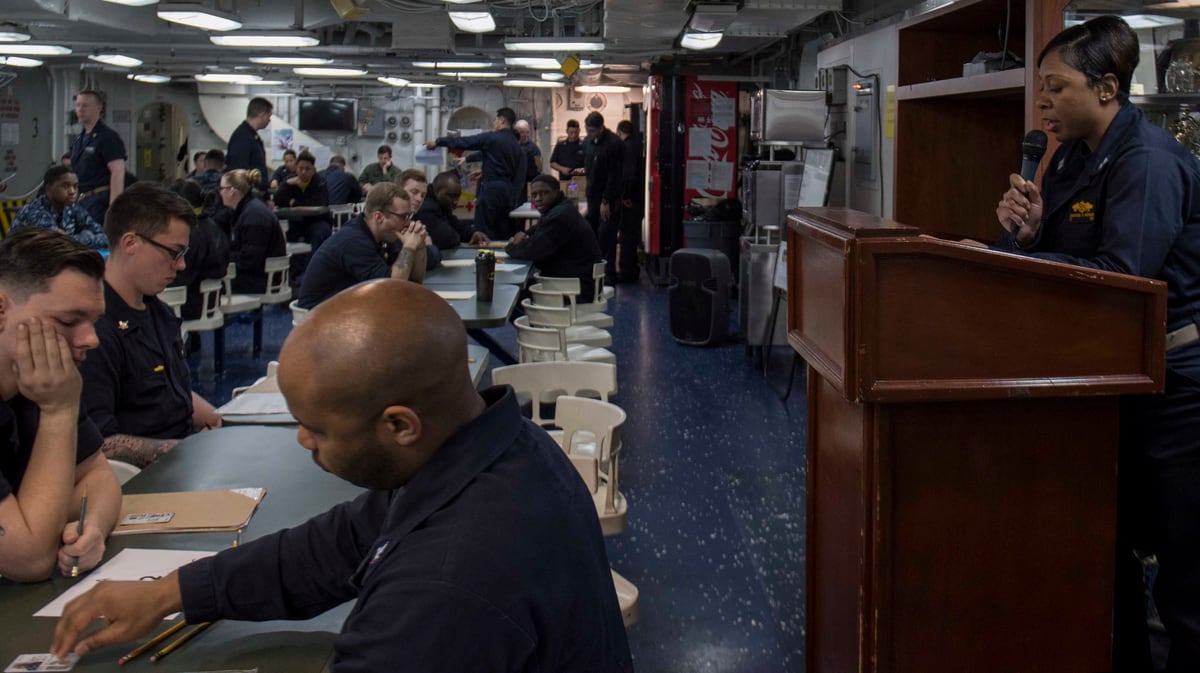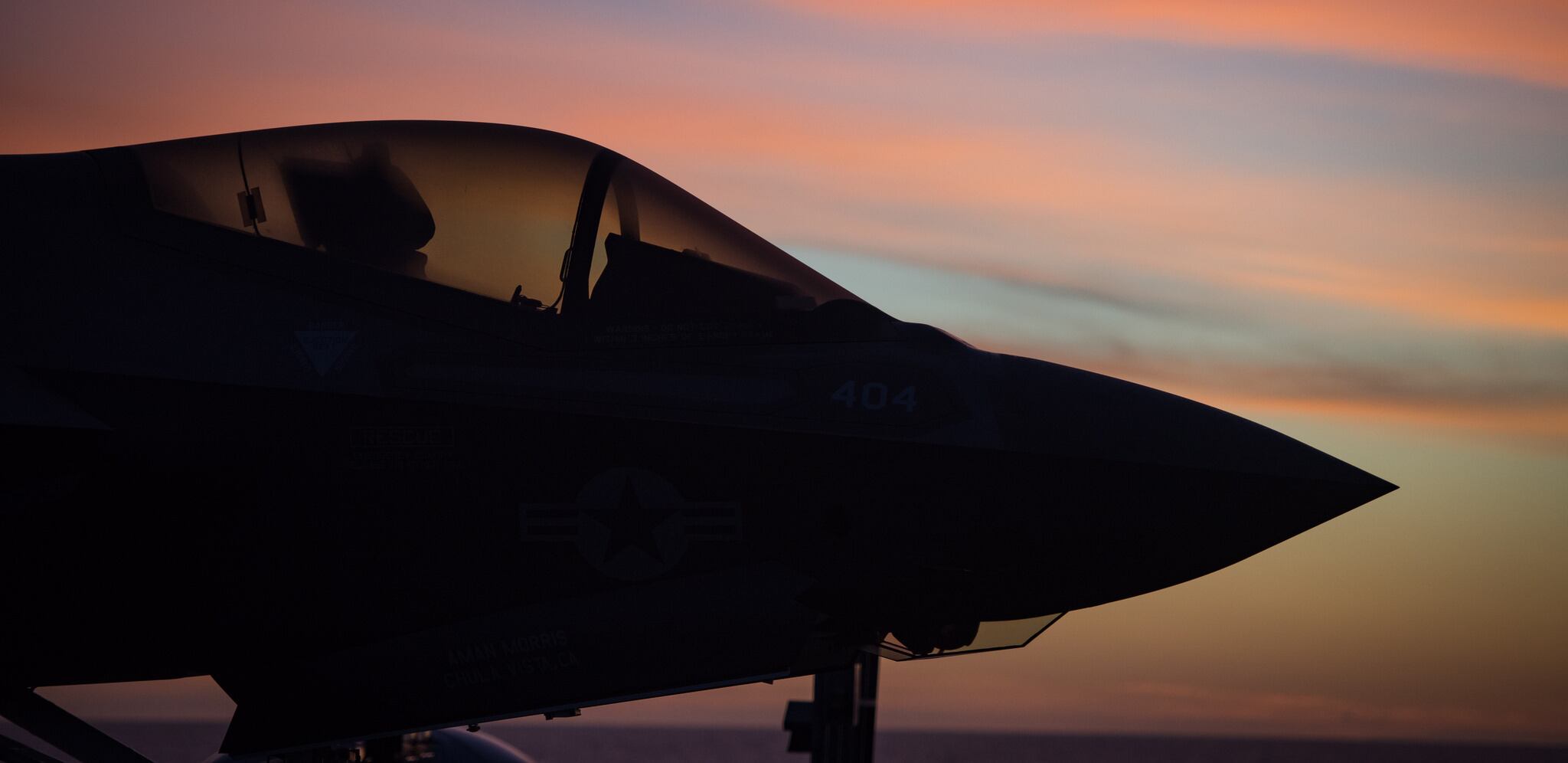As sailors anticipate news about upcoming reenlistment bonuses, the Navy’s outgoing chief of personnel has another message — grab the money when it’s offered, because it could disappear quickly.
Nominated by President Donald J. Trump to become the next Vice Chief of Naval Operations and pick up his fourth star, Vice Adm. Bob Burke told Navy Times that personnel planners are eyeing an incentive update that will boost bonuses for some sailors while dropping them for others.
He calls it a “more dynamic” incentive program because it dangles money for sailors in more ratings and skill sets than have traditionally received bonuses. It also boosts bonus bucks for the Navy’s top performers.
And it’s evolving to include other strategies to help staff a growing Navy beyond merely throwing cash around. In the works are non-monetary retention and detailing incentives designed to keep sailors in uniform while getting them to take the jobs that are the hardest to fill, Burke said.
The Navy’s also testing incentives such as geographic stability for sailors who don’t want to leave an area or offering specialized training as part of retention packages.
“We’ve been spreading [Selective Reenlistment Bonuses] out quite differently over the last year and a half and that was deliberately to build that kind of cadre of knowledgeable experienced mariners at the E-6 and E-6 level,” he said.
“We want a deep bench of warfighting sailors that know what the heck they’re doing running that larger Navy. We need to keep that experience in the Navy, so we’ve been targeting it across the broader audience."
RELATED

Burke wants his deputies to craft a 21st century Selective Reenlistment Bonus program that’s unlike past initiatives, when officials would publish a list of perks that would stand for a year or longer.
“Two years ago, we were putting out one to two SRB messages a year,” he said. “We’ve been averaging five to six a year now.”
The idea is to manage the talent pool by nimbly using monetary bonuses and other incentives to quickly grab those sailors with the right ratings and skills and, once they’re signed up, move to fill other billets.
“So you’ll see different ratings ebb and flow on the SRB levels because as build up a deep bench in one area we will probably scale back on SRB levels there, to build up a bench in another area,” Burke said.
To Burke, that sort of system is “as likely to have a multiple go down as it is up” or even go away totally “because of how dynamic we’re doing the market.”
RELATED

And once a rating or skill comes off the list, it might not reappear a while, if at all.
"It may take it may take several cycles and could even take a year before it comes back again, depending on what's going on with the economy and in your particular job skill overall in the Navy," Burke said.
To make sure that that the largest number of sailors can collect bonuses in exchange for reenlisting in the Navy, officials have widened the re-up windows sailors.
Officials also allow deployed sailors in combat exclusion zones to collect their initial bonus payout and anniversary incentives without incurring a tax liability.
“The message is to act and ask, because the flexibility is there to reenlist a bit earlier to get that money while it is still there,” Burke said. “And if you have extenuating circumstances — for example, you missed your window by a day, or something like that — ask that question.
"We would like to be a commonsense organization and (the) tie goes to the sailor willing to make that commitment.”
Merit bonuses for proven performers was a reform the Navy began testing late last year and Burke said “it’s going well.”
In December, the service began awarding bonus bucks to top sailors in seven surface engineering ratings.
Sailors who had been graded an “early promote” on two of their last three evaluations could qualify, provided they hadn’t failed their physical fitness tests or recorded disciplinary problems over the previous three years.
“We especially want to incentivize the best sailors with those skills we need by paying a little bit more money,” Burke said.
Burke said “we’re finding we were a little bit restrictive” by requiring the two “early promote” recommendations over a three-year span and officials began “finding that our eligible pool was relatively small.”
He’s letting the pilot program play out a little longer to get the data staffers need to tweak the initiative but he’s seen enough to say his “intent is to continue to expand this as a tool.”
RELATED

Not all sailors have skills that qualify them for re-up bonuses but Burke wants to explore non-monetary incentives to keep them in uniform or prod them to pull duty where the service needs them most.
“I think we have most of the non-monetary benefits kind of worked out and we’re using them in isolated places right now,” Burke said.
He pointed to a critical need now for aviation maintenance ratings to take orders to Naval Air Station Lemoore in California’s rural San Joaquin Valley.
The Navy traditionally struggles to convince sailors to relocate there but now the base is expanding as the service grows its F-35C Joint Strike Fighter program,forcing officials to get creative.
“We’re offering bundled orders deals to aviation maintenance, aviation structural mechanics and aviation ordnance and willing to go to LeMoore,” Burke said.
Those sailors can negotiate for future back-to-back tours at their next duty station, giving them geographic stability, according to the Navy.
Detailers also can hammer out deals for sailors to attend technical schools or get a pay grade boost with the new “advance to vacancy” option.
The Navy’s new orders negotiation system, “Detailing Marketplace,” is slated to premier online in August and “tie all these things together” by letting sailors negotiate bundled deals on a broader scale, Burke said.
Just because it’s not online yet doesn’t mean sailors can’t start making deals with detailers, Burke said. He urged service members to give them a call and talk about what’s available.
“Those kind of conversations can be on the table right now for geographic stability or training opportunities,” he said. “But that conversation will be that you do something for the Navy and the Navy will do something for you in return, or vice versa.”
Mark D. Faram is a former reporter for Navy Times. He was a senior writer covering personnel, cultural and historical issues. A nine-year active duty Navy veteran, Faram served from 1978 to 1987 as a Navy Diver and photographer.




